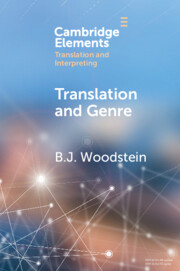Element contents
Translation and Genre
Published online by Cambridge University Press: 03 August 2022
Summary
- Type
- Element
- Information
- Online ISBN: 9781108923255Publisher: Cambridge University PressPrint publication: 25 August 2022
References
- 14
- Cited by

